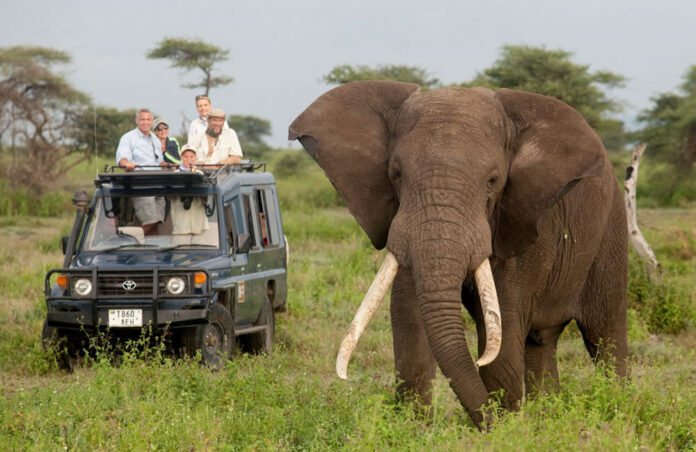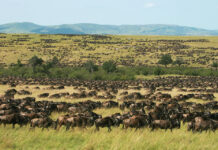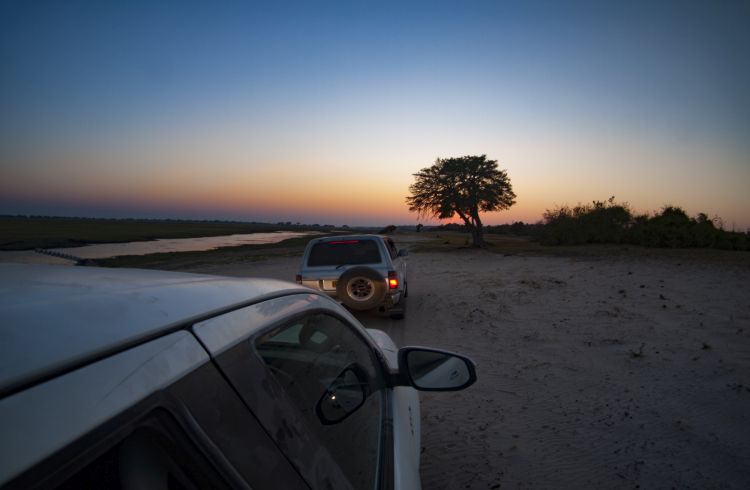Going on a self-drive safari in East Africa can be a thrilling and memorable adventure, offering the freedom to explore stunning landscapes and wildlife at your own pace. It allows travellers to experience national parks, remote areas, and cultural sites without strict schedules. However, it also requires careful preparation to ensure a smooth and safe journey. While some travellers enjoy the independence, others prefer to combine self-driving with guided tours for added security. With the right planning, a reliable vehicle, and awareness of the surroundings, a road trip in East Africa can be a safe and rewarding experience.
Let’s break down everything you need to know to decide if a self-drive safari is safe
- Road Conditions
Road conditions in East Africa vary significantly. Major highways in cities and towns are often paved, but many roads leading to national parks and remote areas are rough, bumpy, or muddy. Some areas have gravel or dirt roads, which can become slippery during the rainy season. Potholes, washed-out sections, and poorly maintained roads can make driving challenging.
Off-road driving is common, especially inside national parks, where tracks may be unmarked or difficult to navigate. If you are not experienced in off-road driving, you may find it tough to handle certain routes.
- Traffic and Driving Culture
Driving in East Africa is different from many Western countries. In cities like Nairobi, Kampala, and Dar es Salaam, traffic can be chaotic, with many vehicles, motorcycles (boda bodas), and pedestrians sharing the roads. Drivers may not always follow traffic rules, and you need to be alert at all times.
In rural areas, roads are less crowded, but you may encounter slow-moving trucks, livestock, or wildlife crossing unexpectedly. Some drivers do not use headlights at night, making nighttime driving risky.
- Navigation and Signage
Road signs are limited in many areas, especially in rural regions and national parks. GPS and Google Maps can be helpful, but they may not always be accurate, especially in remote locations. Carrying a physical map, downloading offline maps, or using a local guide can help with navigation.
- Vehicle Choice
A reliable 4×4 vehicle is essential for a self-drive safari. Standard cars struggle on rough roads, especially in parks and during rainy seasons. A Land Cruiser or similar off-road vehicle with high ground clearance is ideal.
Before starting your trip, ensure your vehicle is in good condition with working brakes, headlights, and tires. Carry spare tires, a jack, and basic tools in case of breakdowns. Some rental companies provide satellite phones or radios for emergencies.
- Wildlife and Safety Inside National Parks
Driving through national parks brings you close to amazing wildlife, but it also requires caution. Animals like elephants, buffaloes, and lions may walk onto the road, and you should always give them space. Never leave your vehicle in the park unless allowed in designated areas.
Be extra careful around rivers and lakes, as crocodiles and hippos can be dangerous. Keep car windows closed when near animals, and avoid honking or sudden movements that might startle them.
- Fuel and Vehicle Repairs
Fuel stations are common in cities and towns but scarce in remote areas and national parks. Always fill your tank before heading to a park or rural region. Carry extra fuel if your route covers long distances without refuelling points.
Breakdowns can happen, so check if your rental company offers roadside assistance. In remote areas, mechanics and spare parts may be limited, making a well-maintained vehicle even more important.
- Security and Safety Precautions
While most tourist areas in East Africa are safe, some regions have security concerns such as carjackings or theft. Here are key safety tips:
- Avoid driving at night, as roads can be dangerous, and visibility is poor.
- Keep doors locked and windows closed when driving through cities or unfamiliar areas.
- Do not leave valuables in plain sight in your car.
- Research your route in advance to avoid high-risk areas.
It’s always good to ask locals or your lodge staff about road conditions and security before heading out.
- Border Crossings
If your safari includes multiple countries (e.g., Kenya and Tanzania), you’ll need the right documentation. This includes:
- A valid passport and visa (if required).
- Temporary vehicle imports permit.
- International driving permit (recommended).
- Insurance covering cross-border travel.
Border crossings can take time, so plan for delays and carry necessary paperwork.
- Weather and Seasonal Challenges
East Africa has dry and wet seasons, which affect road conditions and driving safety.
- Dry season (June–October, December–February): Best time for a self-drive safari, as roads are dry and wildlife is easier to spot.
- Rainy season (March–May, November): Roads become muddy and slippery, making driving more difficult. Some roads may flood or become impassable.
If traveling in the rainy season, a 4×4 with mud-ready tires is a must.
How to Prepare for a Self-Drive Safari in East Africa
A self-drive safari is a great way to explore nature, see wildlife, and enjoy freedom on the road. However, good preparation is necessary to ensure a safe and smooth journey. Here’s how to get ready for your adventure.
- Choose the Right Vehicle
A strong and reliable 4×4 vehicle is essential for a self-drive safari. Many roads in national parks and remote areas are rough, muddy, or rocky, so small cars are not suitable. A Toyota Land Cruiser or similar off-road vehicle is the best choice. Make sure the car is in good condition and has a spare tire, jack, and basic repair tools.
- Get the Right Documents
Before you start your trip, make sure you have all the necessary paperwork. You will need a valid driver’s license, car rental agreement, and insurance documents. If you plan to cross borders, you may need a temporary import permit for the vehicle. Some national parks require permits in advance, so check the entry rules before you go.
- Plan Your Route and Stops
East Africa has long distances between towns, fuel stations, and lodges, so it’s important to plan your journey in advance. Study a map and check the best routes to take. Some roads can be difficult to drive on, especially in the rainy season. Identify places to stop for fuel, food, and rest along the way.
- Pack Essential Supplies
Since you will be traveling in remote areas, it’s important to carry everything you need. Bring a first aid kit, spare tire, extra fuel, drinking water, and non-perishable food. A flashlight, headlamp, and power bank are useful for nights in the bush. If you are camping, pack a tent, sleeping bag, and cooking equipment.
- Learn Basic Car Maintenance
Breakdowns can happen in remote areas, so knowing basic car maintenance is helpful. Learn how to change a tire, check oil and coolant levels, and use a tow rope. If you are renting a car, ask the rental company to show you how to handle common issues before you leave.
- Understand Local Driving Conditions
Driving in East Africa is different from other places. In cities, traffic can be chaotic, and some drivers ignore traffic rules. In rural areas, you may find animals, slow-moving trucks, and pedestrians on the road. Always drive carefully, avoid speeding, and be prepared for unexpected situations.
- Know the Road Rules
In most East African countries, driving is on the left side of the road. Speed limits are different in towns, highways, and national parks, so watch for signs. Some police checkpoints may ask for documents, so always have them ready. Avoid driving at night, as roads are poorly lit and more dangerous.
- Be Prepared for Wildlife Encounters
In national parks, animals can appear on the road at any time. Always keep a safe distance from wildlife, especially elephants, lions, and buffaloes. Never leave your car except in designated areas. Avoid honking or making loud noises that could disturb animals.
- Ensure Personal Safety
While most tourist areas are safe, it’s important to take precautions. Keep your car doors locked and avoid stopping in isolated areas. Do not pick up strangers, and keep valuables hidden. If you need help, go to a police station or ask for assistance from a lodge or hotel.
- Check the Weather and Seasons
The best time for a self-drive safari is during the dry season (June–October and December–February) when roads are in better condition. In the rainy season (March–May and November), some roads become muddy and impassable. Always check the weather forecast before traveling.
- Stay Connected and Have Emergency Contacts
In remote areas, phone signals can be weak or unavailable. Carry a local SIM card for better network coverage, and download offline maps for navigation. If possible, rent a satellite phone or radio for emergencies. Know the emergency contacts for your car rental company, nearest hospital, and park authorities.
- Know When to Get a Guide
If you are new to driving in East Africa or feel unsure about rough roads, hiring a guide or driver can make the trip easier and safer. Many parks offer local guides who know the best routes and can help with navigation and wildlife spotting.
Conclusion
A self-drive safari in East Africa can be a safe and rewarding experience if planned carefully. With proper preparation, a 4×4 rental, and attention to road and wildlife safety, you can enjoy a smooth adventure across Uganda, Kenya, and Tanzania.
These countries offer breathtaking landscapes, rich wildlife, and the freedom to explore at your own pace. Whether driving through the vast plains of the Serengeti, the rugged terrains of Bwindi, or the scenic routes of the Maasai Mara, a self-drive safari allows for a more personal and flexible experience. However, it is important to be well-informed about road conditions, park regulations, and driving customs in each country.
While some roads are well-maintained, others can be rough, requiring extra caution and good navigation skills. Being patient and adaptable will help make the journey more enjoyable. With the right mindset and careful planning, a self-drive safari can be a safe, unforgettable adventure that offers a deep connection to East Africa’s natural beauty and diverse wildlife.









